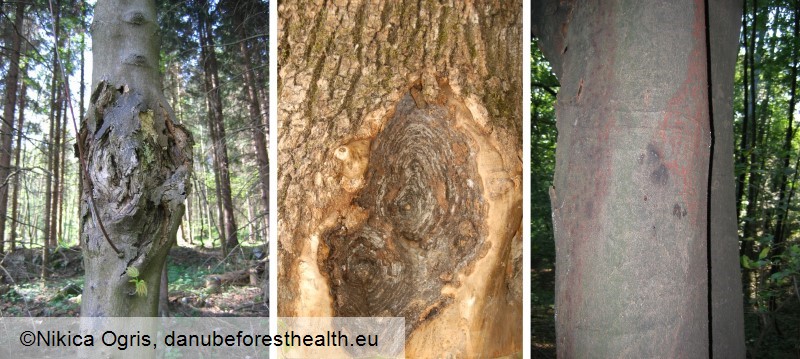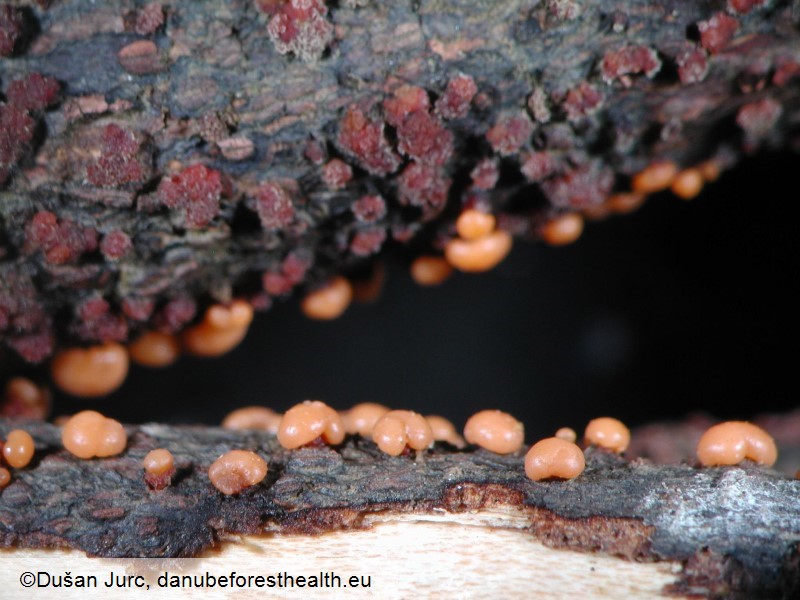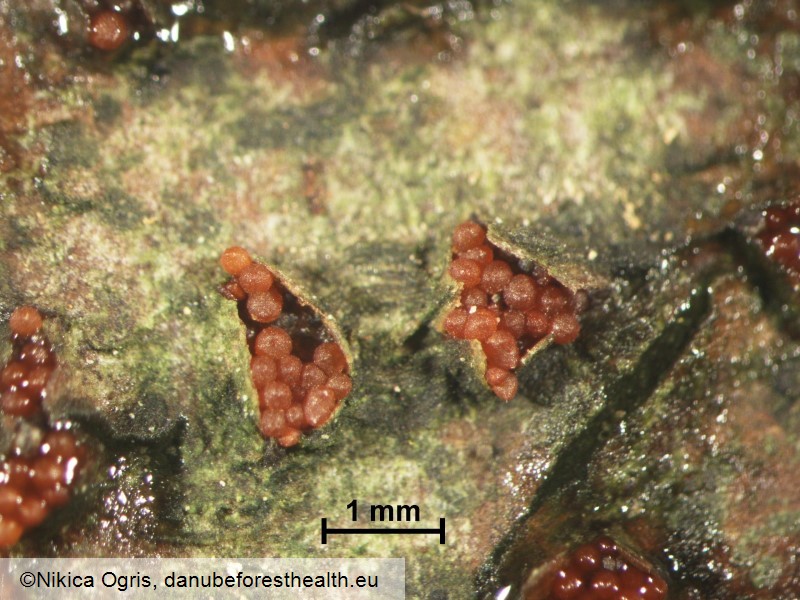Fungi
Nectria and Neonectria
Nectria spp.
Nikica Ogris, Thomas Cech
|
|

Fig. 1. Cankers caused by Neonectria ditissima (from left to right): on maple, ash, beech

Fig. 2. Sporodochia (below) and perithecia (above) of Nectria cinnabarina on dead beech shoot

Fig. 3. Perithecia of Nectria cinnabarina in beech bark
DETECTION PERIOD:
whole year
DESCRIPTION:
Nectria and Neonecria are easily confirmed on genus level in the field by its significant fruiting bodies. At most species at first asexual fruiting bodies (sporodochia) develop which appear as of waxy, soft, pinhead-sized warts with bright light red to orange colour. Later on, sexual fruiting bodies (perithecia) appear from the same positions, which are also reddish (sometimes dark), spherical to ovoid and about 0.5 mm across.
HABITAT:
Broadleaves and conifers, depending on species of Neonectria and Nectria.
STATUS:
Very frequent, worldwide distribution. Neonectria canker of fir (N. neomacrospora) is spreading in North Europe but in Central Europe and Danube region it has not been found yet.
IMPACT:
Nectria species are most often encountered as saprophytes on decaying wood but some species can also occur as parasites of trees. Some species are significant pests causing diseases such as beech canker (N. ditissima), apple canker (N. galligena), coral spot (N. cinnabarina), and Neonectria canker of fir (N. neomacrospora). In beech, N coccinea is one of the first followers of Phytophthora able to enlarge stem cankers. In maples, the same species occasionally attacks stems, covering it with numerous bright red perithecia.
SIMILAR SPECIES:
Neonectria and Nectria species can be mixed up easily. However, determination to the genus level can be done in the field with quite high confidence. Finally, Neonectria and Nectria can be determined to the species level only in the laboratory by experts.
|